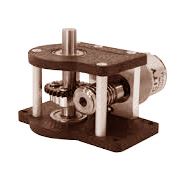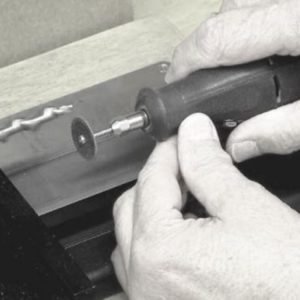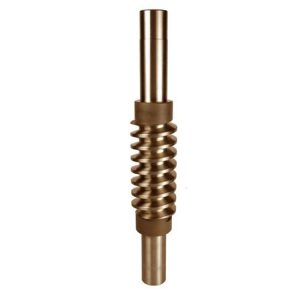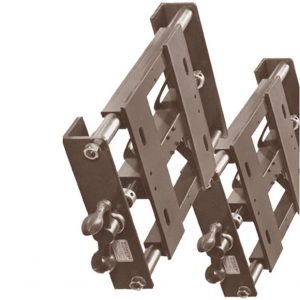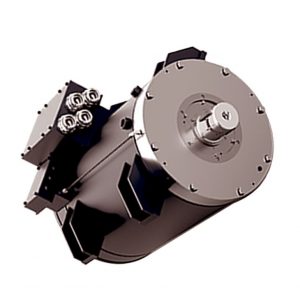Product Description
Product Description
Stainless steel nylon hoisting pully block cable roller laying tools
1. Double-purpose cable pulley, suitable for Angle steel crossarm, extending small and medium section conductor
2.Lightweight, no damage to the wire, safe and reliable
3. Reinforce hook, bearing heavy, not easy to fall off, widen and thicken steel plate, safe and stable
4. Aluminum cable pulley, high carbon steel, durable, used for straight rod on the extension of aluminum strand or steel core aluminum strand
5. Advanced edge folding technology to prevent damage and deformation
6. Thickened high strength nylon wheel, not afraid of falling, light weight, high wear resistance
|
Product Name |
High-Quality Small Stainless Steel Single Block Nylon Sheave Pulley |
|
Material |
Stainless Steel , Nylon, Aluminum |
|
Size |
80*50mm,120*60mm,160*40mm,200*60mm,250*60mm |
|
Use and Characteristics: |
Suit for middle and small section wire expansion. |
|
Place of Origin |
China |
|
Payment Terms |
T/T, L/C, West Union, Paypal, etc |
|
MOQ |
10 pcs |
|
Sample Time |
5 days |
|
Delivery |
10 days |
Size:80*30mm/100*35mm/100*50mm/120*35mm/120*60mm/150*60mm/200*70mm Size:80*35mm/80*50mm/100*50mm/120*60mm/150*60mm/200*60mm/250*60mm
Products Catalogue
Company Profile
FAQ
1. Q: Do you provide sample service?
A: Yes, we only provide samples and ask for 1 piece at a time. The freight should be borne by you.
2. Q: Do you support customized services?
A: Yes, we can customize the size and logo according to your needs. Please consult the customer service for the specific minimum order quantity.
3. Q: How is the Design & Engineering?
A: Experienced and skilled team of designers including CAD designers and 3D designers has the capacity to deliver outstanding designs for your project. If you require more complex engineering of structures such as overhead transmission and distribution lines design,we can also provide this service also designer fee .
4. Q: What’s the payment term?
A: We accept T/T, L/C, West Union.
5. Q: What’s the delivery time?
A: Usually within 7-15 days according to quantities
6. Q: What’s the standard of package?
A: Export standard package or special package as the requirement of customers.
7. Q: What kind of product quality your factory offer?
A: Our products with both excellent quality and competitive price. And we offer free sample for your reference.
8. Q: What kind of certificate you have?
A: We have ISO9001:2008
| Type: | Pulley Block |
|---|---|
| Certification: | CE, RoHS, CCC, ISO |
| Customized: | Customized |
| Condition: | New |
| Feature: | Insulation |
| Transport Package: | Wooden Case |
| Samples: |
US$ 0/Piece
1 Piece(Min.Order) | |
|---|
What is the difference between a fixed and a swivel pulley?
Fixed and swivel pulleys are two common types of pulleys that differ in their design and functionality. Here are the key differences between these two types:
1. Fixed Pulley: A fixed pulley is a type of pulley that is mounted or attached to a fixed point, such as a beam or a ceiling. It does not move or rotate independently of its mounting point. The primary function of a fixed pulley is to change the direction of the force applied to a rope or cable. When a force is applied to the rope or cable passing through a fixed pulley, the load moves in the opposite direction. However, a fixed pulley does not provide any mechanical advantage, meaning it does not reduce the effort required to lift the load.
2. Swivel Pulley: A swivel pulley, also known as a movable pulley, is designed to rotate or swivel on a separate mounting point. It has a built-in mechanism that allows it to move independently. Unlike a fixed pulley, a swivel pulley is capable of changing both the direction and the magnitude of the force applied to the rope or cable. When a force is applied to the rope or cable passing through a swivel pulley, the load moves in the same direction as the applied force. Additionally, a swivel pulley provides a mechanical advantage by distributing the load’s weight over multiple strands of rope or cable, reducing the effort required to lift the load.
In summary, the main differences between fixed and swivel pulleys are:
– Fixed pulleys are stationary and do not move independently, while swivel pulleys can rotate or swivel on a separate mounting point.
– Fixed pulleys change the direction of the force applied to the rope or cable, while swivel pulleys change both the direction and the magnitude of the force.
– Fixed pulleys do not provide a mechanical advantage, while swivel pulleys provide a mechanical advantage by distributing the load’s weight over multiple strands of rope or cable.
Both fixed and swivel pulleys have their specific applications and can be used individually or in combination with each other to achieve desired mechanical functions in various systems and setups.
What is the role of pulleys in the mining and construction industries?
Pulleys play a vital role in the mining and construction industries, where they are utilized in various applications to facilitate heavy-duty operations, enhance safety, and improve efficiency. Here’s an overview of the role of pulleys in these industries:
1. Conveyor Systems:
In mining and construction, conveyor systems are extensively used to transport bulk materials, such as ores, rocks, gravel, and construction aggregates. Pulleys are integral components of conveyor systems, guiding and supporting the conveyor belts or chains. They help in maintaining tension, reducing friction, and ensuring smooth movement of materials over long distances. The pulleys used in these systems are designed to withstand high loads and harsh environmental conditions.
2. Hoisting and Lifting Equipment:
Pulleys are crucial in hoisting and lifting equipment used in mining and construction activities. Cranes, winches, and lifting systems often incorporate pulley arrangements to provide mechanical advantage and control the movement of heavy loads. The pulleys, along with ropes, cables, or chains, allow for safe and efficient lifting, lowering, and positioning of equipment, materials, and structures at construction sites or in mining operations.
3. Wire Rope Systems:
In mining and construction, wire ropes are extensively used for various applications, including hauling, towing, and lifting heavy loads. Pulleys, known as sheaves, are employed in wire rope systems to guide and redirect the wire ropes. The sheaves help in maintaining proper alignment, reducing wear, and ensuring efficient power transmission. They are commonly used in applications such as cranes, elevators, and wire rope hoists.
4. Crushing and Screening Equipment:
In the mining and construction industries, pulleys are used in crushing and screening equipment. For example, in crushers, pulleys are utilized to drive the rotating motion of the crusher’s jaws or cones, enabling the crushing of large rocks or ores into smaller sizes. Pulleys also play a role in vibrating screens, helping to generate the necessary vibrations that separate and classify materials based on size.
5. Earthmoving and Excavation Equipment:
Pulleys are incorporated into earthmoving and excavation equipment in mining and construction applications. For instance, in excavators or dragline machines, pulleys are used in the cable systems that control the movement of the bucket or shovel. The pulleys help in extending or retracting the cables, allowing for efficient excavation, loading, and material handling.
6. Tensioning and Alignment:
In mining and construction operations, pulleys are utilized for tensioning and alignment purposes. Tensioning pulleys ensure proper tensioning of belts, ropes, or cables, optimizing power transmission and preventing slippage. Alignment pulleys are employed to maintain the correct alignment of belts or chains, reducing wear, minimizing vibrations, and extending the lifespan of the components.
In summary, pulleys play a critical role in the mining and construction industries, contributing to material handling, lifting and hoisting operations, wire rope systems, crushing and screening equipment, earthmoving and excavation machinery, and tensioning and alignment applications. Their use enhances safety, improves efficiency, and enables the execution of heavy-duty tasks in these demanding industries.
What safety precautions should be observed when using pulleys?
When using pulleys, it is important to observe several safety precautions to ensure the well-being of individuals involved and prevent accidents. Here are some key safety precautions that should be followed:
1. Proper Training: Individuals who operate or work around pulley systems should receive proper training on their usage, including understanding the equipment, safety procedures, and potential hazards. Training should cover topics such as load limits, proper lifting techniques, and the importance of following safety guidelines.
2. Inspections and Maintenance: Regular inspections and maintenance of pulleys are crucial for identifying any signs of wear, damage, or malfunction. Inspect pulleys for cracks, deformation, excessive wear, or any other issues that may compromise their integrity. Replace damaged or worn-out pulleys immediately to prevent accidents.
3. Load Capacity: Ensure that the load being lifted or moved does not exceed the rated load capacity of the pulley system. Exceeding the load capacity can lead to overloading, which may result in equipment failure, accidents, or injuries. Refer to the manufacturer’s guidelines or load capacity charts for proper load calculations.
4. Secure Attachment: Ensure that pulleys are securely attached to their mounting points or support structures. Loose or improperly secured pulleys can cause the load to shift or fall, posing significant safety risks. Use appropriate hardware, such as bolts or clamps, and follow manufacturer recommendations for proper attachment methods.
5. Personal Protective Equipment (PPE): Individuals involved in pulley operations should wear the necessary PPE, depending on the specific hazards present. This may include safety helmets, gloves, safety glasses, and appropriate footwear. PPE helps protect against potential injuries from falling objects, impacts, or contact with moving parts.
6. Clear Work Area: Maintain a clear work area around the pulley system. Remove any obstructions, debris, or tripping hazards that could impede safe operation or cause accidents. Adequate space should be provided for safe movement and positioning of individuals involved in the operation.
7. Communication and Signaling: Establish clear communication and signaling protocols when working with pulleys. Use standardized hand signals or communication devices to ensure effective communication between operators, spotters, and other personnel involved. This helps coordinate movements, avoid misunderstandings, and prevent accidents.
8. Emergency Stop Procedures: Familiarize yourself with the emergency stop procedures for the pulley system. Ensure that all individuals involved are aware of how to quickly and safely stop the operation in case of an emergency or unexpected event. Clearly mark emergency stop buttons or switches and ensure they are easily accessible.
9. Lockout/Tagout: If performing maintenance, repairs, or adjustments on the pulley system, follow proper lockout/tagout procedures to isolate energy sources and prevent accidental startup. Lockout/tagout procedures help protect against unexpected movements or releases of stored energy.
10. Risk Assessment: Conduct a thorough risk assessment before using pulleys. Identify potential hazards, evaluate associated risks, and implement appropriate control measures to mitigate those risks. Regularly review and update risk assessments as necessary.
It is essential to consult relevant industry standards, guidelines, and local regulations specific to your application or jurisdiction to ensure compliance with safety requirements when using pulleys.
editor by CX
2023-12-08










